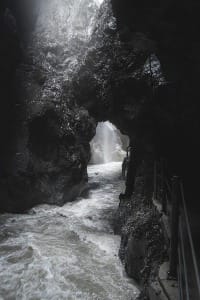A bit about how The Black Refinery was born
This is the TLDR of my Substack post where I wrote about The Black Refinery. Read the original Substack post here.
It started with an image:

and a poem:
Jagged rock walls and a maze full of caves
Fast moving rapids pushing down slaves
Deep in the mines, you digging for gold
But deep in the mines, you only find coal.
Though it was intended to be a narrative poem of class and commodification, the core idea morphed into an overtly racial framework. The title of The Black Refinery came as an epiphany, then a second poem was born, acting as the story's ethos:
Let him wear kente. Let him wear a fro.
Let him quote Malcolm. Let him put on a show.
Put a book in his hand to make him think he know.
Together, these three bits of inspiration coalesced into an idea of what it means when blackness is molded, refined, filtered, and commodified into something (symbols, personalities, narratives) that can be worn and discarded, that can be given and taken, that can be reinterpreted--regardless of intent.
The speculative elements--a cyborg cop, gremlin-like trolls, valuable minerals--became the avenue to explore these themes in a tangible and entertaining way. They were a product of the question "wouldn't it be cool if...?" which, I suppose, is a hallmark of the speculative genre.
It's only fitting that this story was published in June and ten-ish days after Juneteenth (in which I thank the Strange Horizons team for this special call).
Speculative fiction--despite its often broadly defined, highly elusive nature--is a wonderful sweet spot for writing genre fiction with meaning. The character of Obee Carter was deeply cathartic to create. And, despite the story's core conflict of overwhelming systems that tell us who we are, there is room to simply exist.